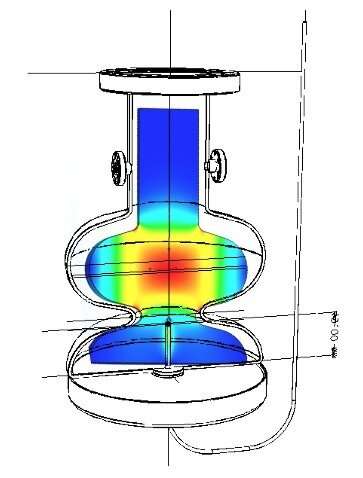Phys.org June 22, 2021
In a proof of principle experiment researchers at the DOE’s Thomas Jefferson National Accelerator Facility are preparing to trap and levitate particles inside a cavity using an electric field. Intrinsic characteristics of superconducting radiofrequency (SRF) cavities will overcome some limits of laser trapping. If they can levitate a particle, they might be able to impart a quantum state on it by cooling the trapped particle to its lowest possible energy level. A levitated particle in an SRF cavity that is under vacuum and chilled to super cold temperatures will only interact with the cavity’s electric field and not lose information to the outside, which is important for maintaining a quantum state. The team is currently setting up the experiment in real life. First, they will assemble a mock-up of the experiment at room temperature and circulate liquid helium around the outer surfaces of the cavity to cool it to superconducting temperatures approaching absolute zero. They have come up with a way to remotely launch a particle in the cavity under experimental conditions…read more.

This is a line drawing of an accelerator cavity that will be used in a proof of principle project… Credit: Thomas Jefferson National Accelerator Facility